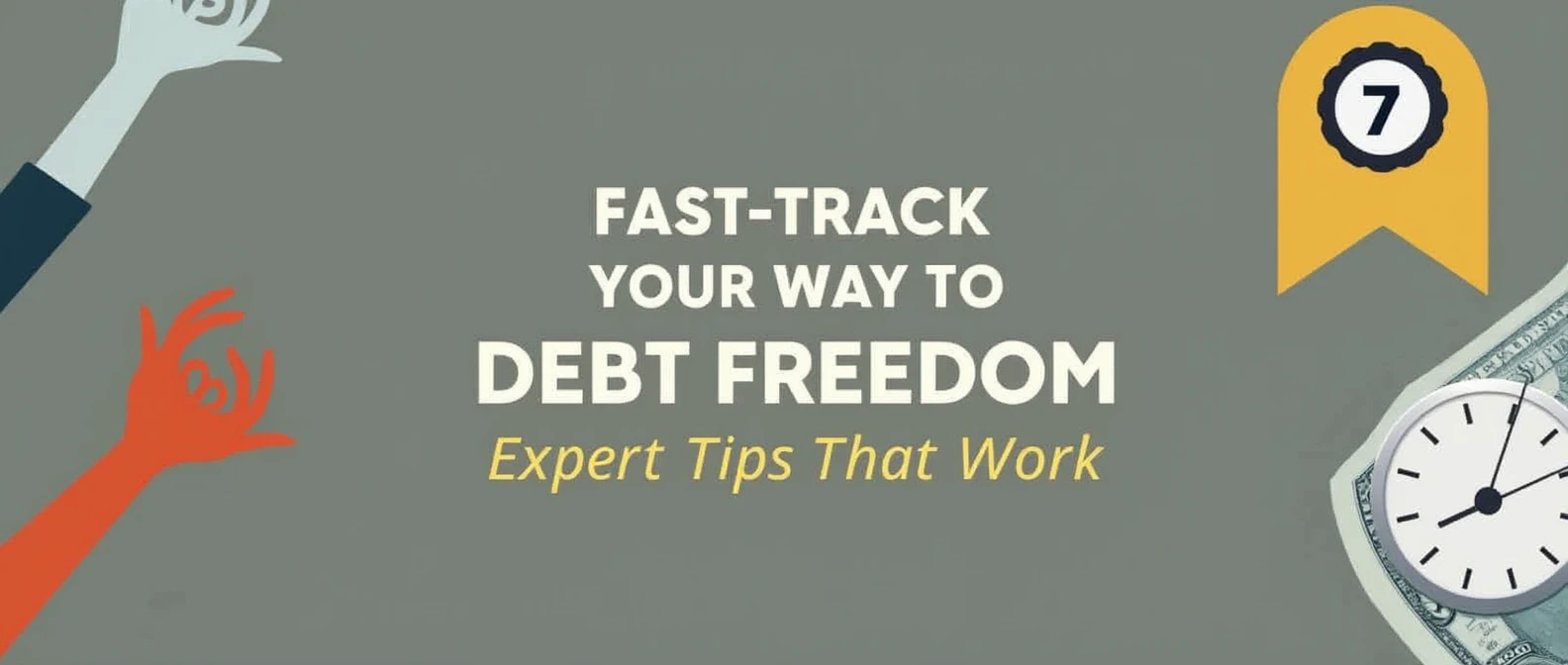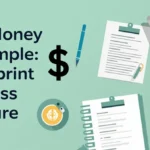The Best Fluffy Pancakes recipe you will fall in love with. Full of tips and tricks to help you make the best pancakes.
Table of Contents
Understanding Your Debt Freedom
Assessing your total debt is a critical initial step in the journey towards financial stability. It involves not just listing the various debts you owe, but also gaining insight into the different creditors, interest rates, and terms of repayment associated with each obligation. This comprehensive understanding is crucial for developing a tailored debt repayment strategy that fits your financial situation.
To start, gather all relevant financial documents, including credit card statements, loan agreements, and any notices from creditors. It is essential to compile this information in one place to ensure nothing is overlooked. Create a spreadsheet or utilize a debt tracking app to itemize each debt. Include details such as the creditor’s name, total balance owed, interest rate, and minimum monthly payment. This organized approach helps provide a complete picture of your debt and highlights which debts may require more immediate attention.
Once you have this information, calculate the total amount of debt you owe. This total will serve as a benchmark for measuring your progress as you implement your debt repayment strategy. Additionally, analyze the interest rates on each debt, as high-interest obligations can still grow significantly over time, impacting your financial health. Recognizing which debts carry the highest interest rates can help prioritize payments that will save you money in the long run.
Understanding your debt not only empowers you to create an effective repayment plan but also provides perspective on your financial habits. With a clearer understanding of what you owe, you will be better equipped to make informed decisions that set the stage for achieving your goal of becoming debt-free.
Creating a Realistic Budget
Developing a realistic budget is a fundamental step towards achieving financial stability and getting out of debt quickly. A well-structured budget provides a comprehensive overview of one’s monthly income, expenses, and outstanding debts. By laying out all financial aspects clearly, individuals can identify areas needing adjustment and strategize effectively for debt repayment.
To create an effective budget, it is essential first to record all sources of income accurately. This includes salaries, bonuses, freelance earnings, and any other cash inflows. Once total monthly income is determined, the next imperative step is to categorize all expenses into fixed and variable types. Fixed expenses are those that remain constant, such as rent, utilities, and insurance, whereas variable expenses may fluctuate monthly, including groceries, entertainment, and dining out. Understanding this distinction allows for more refined financial control.
A crucial element of budgeting is discerning between needs and wants. Needs are essential expenses necessary for survival and daily living, while wants encompass discretionary spending that can often lead to overspending. By prioritizing needs, individuals can minimize unnecessary expenses, thereby freeing up additional funds for vital needs, like debt repayments. Implementing strategies such as meal planning, cutting back on non-essential subscriptions, and adjusting utility usage can significantly lower overall expenditure.
Furthermore, a budgeting tool or application can simplify the tracking process, making it easier to monitor financial progress. Updating the budget monthly to reflect changes in income or expenses ensures it remains relevant and effective. By diligently following a well-constructed budget, individuals can allocate extra funds toward debt repayment systematically, gradually moving toward financial freedom.
Choosing a Debt Repayment Strategy

When it comes to addressing debt, selecting an effective repayment strategy is crucial. Two well-known methods are the snowball method and the avalanche method. Each of these strategies exhibits unique advantages and disadvantages that can significantly influence an individual’s journey to financial freedom.
The snowball method involves prioritizing and paying off the smallest debts first. This approach focuses on gaining momentum as debts are eliminated, which can provide psychological motivation. The immediate satisfaction of clearing smaller debts can reinforce positive financial habits and instill confidence. However, a potential drawback of this method is that it may result in paying more interest over time, as larger debts are neglected in the short term.
In contrast, the avalanche method targets debts with the highest interest rates first. This strategy can lead to significant savings over time by minimizing interest expenses. By addressing high-interest debts immediately, individuals can reduce the total cost of their debt more effectively. Nonetheless, the avalanche method may not provide the same emotional satisfaction experienced with the snowball approach. Some individuals may find the lack of quick wins discouraging, leading to a potential loss of motivation.
When choosing between these strategies, it is important to consider one’s financial behavior and psychological motivators. For those who thrive on celebrating small victories, the snowball method may be more appropriate. Conversely, individuals motivated by saving money in the long run might lean towards the avalanche method. Ultimately, the best strategy is the one that aligns with personal preferences while also being adaptable to changing financial situations.
Increasing Your Income
Increasing your income is a powerful strategy in the journey toward financial freedom and getting out of debt fast. While traditional employment provides a stable source of income, exploring alternative or supplemental avenues can significantly accelerate your debt repayment process. Numerous practical methods exist to help individuals boost their earnings.
Freelancing stands out as a widely accessible option for many. Individuals can leverage their skills in areas such as writing, graphic design, programming, or consulting on platforms like Upwork or Fiverr. This approach not only brings in additional revenue but also allows for flexibility in working hours, making it easier to balance with a full-time job.
Moreover, part-time work can serve as another effective way to enhance income. Many businesses offer flexible or remote part-time positions, particularly in customer service, retail, and tutoring. Working a few extra hours each week can yield a significant amount through ongoing employment.
Another straightforward method to increase income is selling unwanted items. Many households accumulate items that are no longer needed or used, which can be sold through online marketplaces such as eBay, Facebook Marketplace, or local selling groups. This not only declutters living spaces but also generates cash that can be directed towards debt repayment.
Additionally, finding side gigs tailored to personal interests can provide further financial opportunities. From pet sitting and house cleaning to ridesharing or food delivery, these activities can bring in extra money quickly. Regardless of the method chosen, it is crucial to allocate any supplementary income directly to debt repayment. This strategic approach not only accelerates the path to financial stability but also fosters a sense of accomplishment and empowerment as debts diminish over time.
Negotiating with Creditors
Negotiating with creditors is an essential step in managing and reducing debt effectively. It involves communicating directly with your creditors to request more favorable terms on your existing debts, which can significantly decrease your overall repayment burden. The key to a successful negotiation lies in thorough preparation and effective communication.
Before you contact your creditors, take the time to assess your financial situation. Gather information about your current debts, interest rates, and payment history. This preparation will provide a solid foundation for your conversation. Additionally, create a budget that outlines your financial capabilities; this will help you determine the adjustments you can realistically request. For instance, you may want to propose a lower interest rate or extended payment terms that align with your budget constraints.
When reaching out to creditors, approach the conversation with clarity and confidence. Clearly articulate your request and provide valid reasons for your negotiation. Some examples may include your long-standing relationship with the creditor, recent financial difficulties, or improved creditworthiness. It is also helpful to highlight any positive payment history you may have, as this demonstrates your commitment to fulfilling your obligations. Keep in mind to remain polite and calm throughout the discussion, as a positive attitude can foster goodwill and result in better outcomes.
There are numerous successful negotiation examples that can serve as inspiration. Many individuals have found success in obtaining lower interest rates through persistent communication and a strong presentation of their circumstances. Additionally, resources such as credit counseling services can offer professional guidance in preparing for negotiations. With the right strategy and attitude, negotiating with creditors can be a powerful way to alleviate financial strain and expedite the journey toward becoming debt-free.
Utilizing Balance Transfers and Debt Consolidation

Managing debt can often feel overwhelming, but utilizing balance transfers and debt consolidation offers two strategic methods to regain financial control. Balance transfer credit cards allow individuals to move existing credit card debt to a new card, often with a lower interest rate or even an introductory 0% APR period. This can significantly reduce the amount of interest owed over time, enabling more of the monthly payment to be applied directly to the principal balance.
However, borrowers should approach balance transfers with caution. These cards typically come with high fees, and if payments are not made on time, the interest rates can escalate quickly. It is essential to thoroughly understand the terms associated with the new card, including promotional periods and interest rates that may apply after the promotional rate expires. For those who can commit to a strict repayment plan, balance transfers can be an effective tool for reducing debt swiftly.
On the other hand, debt consolidation loans combine multiple debts into a single loan with a fixed interest rate, which can make monthly budgeting easier. These loans can help individuals attain a lower overall interest rate if their credit score has improved since they incurred their original debts. Moreover, they often have predictable monthly payments that simplify the repayment process.
Before opting for a debt consolidation loan, it is crucial to consider the full financial picture. Borrowers should assess whether they can secure a loan with favorable terms and whether their current spending habits may hinder their ability to pay off consolidated debts. It is advisable to avoid accumulating more debt after consolidation, which can negate the benefits of this approach.
In summary, both balance transfers and debt consolidation can be powerful strategies for managing debt, provided they are approached with careful consideration and planning. Understanding the risks and benefits of each option empowers individuals to make informed decisions tailored to their financial needs.
Building an Emergency Fund
Establishing an emergency fund is a crucial component of any debt repayment strategy. Even while actively paying off debt, having a dedicated savings account for unforeseen expenses can shield individuals from exacerbating their financial situation. An emergency fund, even a modest one, acts as a financial buffer that can help prevent the need to rely on credit cards or loans, which often leads to further debt accumulation.
As a guideline, financial experts suggest aiming for an emergency fund that covers three to six months’ worth of essential living expenses. However, for individuals in the midst of debt repayment, starting small is often more practical. A target of $500 to $1,000 can serve as an initial emergency fund, providing a safety net for unexpected costs such as medical emergencies or car repairs. This smaller goal can help maintain your momentum in debt repayment while offering a sense of security.
To build an emergency fund on a tight budget, consider implementing some straightforward strategies. First, examine your monthly expenses to identify areas where you can cut back, such as dining out or subscription services. finance; Channeling these savings directly into your emergency fund can accumulate surprisingly quickly. finance; Another effective approach is to set up an automatic transfer from your checking account to your savings account every payday. finance; This method enforces discipline and ensures that contributions to the fund are consistent.
Additionally, consider any windfalls, such as tax refunds or bonuses, as potential contributions to your emergency savings. finance; By being proactive and disciplined about saving, you can establish a fund that not only protects you from unexpected expenses but also supports your overall financial health while on the path to being debt-free.
Staying Motivated Throughout the Process
Maintaining motivation during the journey of debt repayment is crucial for success. finance; One effective strategy is to set achievable milestones that break the overall debt amount into smaller, manageable goals. These milestones can include paying off a specific percentage of debt or eliminating one debt account entirely. finance; By defining these smaller targets, individuals can experience a sense of progress and accomplishment, significantly boosting their morale.
Additionally, celebrating small successes is fundamental to sustaining motivation. finance; Each time a milestone is reached, individuals should acknowledge their achievements. finance; This could involve treating themselves to a modest reward, engaging in a favorite activity, or sharing the news with friends or family. finance; Celebrations reinforce positive behavior and create an ongoing cycle of motivation and engagement in the debt repayment process.
Finding a support group can also greatly enhance motivation. finance; Connecting with others who are on a similar journey can provide encouragement, accountability, and shared experiences. finance; Participants in a support group can offer tips, celebrate successes together, and discuss challenges, which fosters a sense of community. finance; Whether it is through online forums, social media groups, or local meetups, the power of shared experiences can be instrumental in maintaining focus on debt repayment goals.
Moreover, adopting a positive mindset is essential when tackling debt. This involves shifting the focus from viewing debt as a burden to recognizing it as a challenge that can be overcome. finance; By practicing positive affirmations and visualizing the benefits of being debt-free, individuals can cultivate resilience. finance; Understanding that financial freedom is a journey and not a sprint will help in managing stress and staying motivated throughout the process.
Assessing Long-Term Financial Habits

Once the burden of debt is lifted, it becomes crucial to evaluate long-term financial habits to ensure a sustainable financial future. finance; Avoiding the pitfalls that led to debt accumulation requires a commitment to understanding and improving one’s financial literacy. finance; Individuals must reflect on their previous spending behaviors and identify patterns that may precipitate a return to debt. finance; This forms the foundation for a more disciplined and informed approach to personal finance.
Understanding and mastering the principles of budgeting is of paramount importance. finance; Establishing a detailed budget allows individuals to track income and expenditures, helping to identify areas where spending can be reduced. finance; It is advisable to adopt the 50/30/20 rule, which allocates 50% of income to needs, 30% to wants, and 20% to savings and debt repayment. This structured approach can provide clarity and prevent overspending, thereby minimizing the risk of falling back into debt.
Furthermore, cultivating healthy savings habits is essential for financial security. Setting aside funds in an emergency savings account ensures that unforeseen expenses do not lead back to reliance on credit. finance; A rule of thumb is to maintain at least three to six months’ worth of living expenses in easily accessible accounts. finance; Additionally, considering investments, when appropriate, can contribute to long-term financial growth. finance; Learning about various investment vehicles, such as stocks, bonds, and mutual funds, can position individuals to build wealth and achieve financial goals more effectively.
Incorporating continual financial education is also critical. Engaging with resources such as financial courses, books, and workshops can promote better decision-making and healthier monetary habits. finance; Establishing a support network, whether through financial advisors or peer groups, can further bolster commitment to these newfound practices. finance; By fostering a mindset focused on conscious spending and continuous learning, individuals can secure their financial future and avoid the cycle of debt repetition.









